Previous issues
- Page Path
- HOME > Browse Articles > Previous issues
- [Korean]
- Effect of Particle Sphericity on the Rheological Properties of Ti-6Al-4V Powders for Laser Powder Bed Fusion Process
- T. Y. Kim, M. H. Kang, J. H. Kim, J.K. Hong, J.H. Yu, J.I. Lee
- J Powder Mater. 2022;29(2):99-109. Published online April 1, 2022
- DOI: https://doi.org/10.4150/KPMI.2022.29.2.99
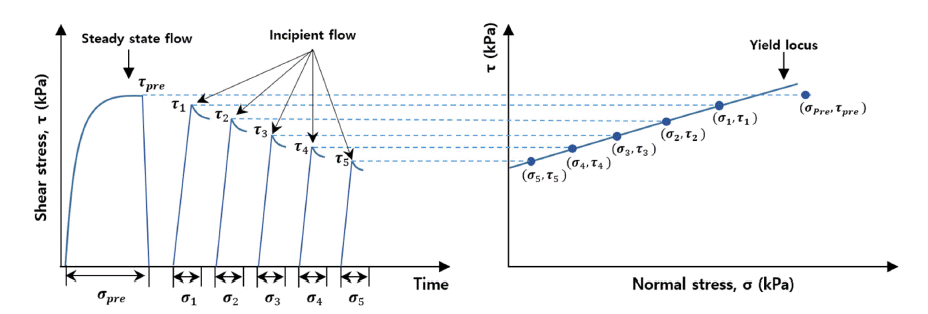
- 1,472 View
- 33 Download
- 4 Citations
-
 Abstract
Abstract
 PDF
PDF Powder flowability is critical in additive manufacturing processes, especially for laser powder bed fusion. Many powder features, such as powder size distribution, particle shape, surface roughness, and chemical composition, simultaneously affect the flow properties of a powder; however, the individual effect of each factor on powder flowability has not been comprehensively evaluated. In this study, the impact of particle shape (sphericity) on the rheological properties of Ti-6Al-4V powder is quantified using an FT4 powder rheometer. Dynamic image analysis is conducted on plasma-atomized (PA) and gas-atomized (GA) powders to evaluate their particle sphericity. PA and GA powders exhibit negligible differences in compressibility and permeability tests, but GA powder shows more cohesive behavior, especially in a dynamic state, because lower particle sphericity facilitates interaction between particles during the powder flow. These results provide guidelines for the manufacturing of advanced metal powders with excellent powder flowability for laser powder bed fusion.
-
Citations
Citations to this article as recorded by- A fully computational approach for the prediction of melt pool generation of the directed energy deposition process
Mingyu Chung, Kang-Hyun Lee, Jaeeun Park, Yoon Sun Lee, Gun Jin Yun
Journal of Mechanical Science and Technology.2025; 39(11): 6847. CrossRef - Enhanced Microstructure and Wear Resistance of Ti–6Al–4V Alloy with Vanadium Carbide Coating via Directed Energy Deposition
Ui Jun Ko, Ju Hyeong Jung, Jung Hyun Kang, Kyunsuk Choi, Jeoung Han Kim
Materials.2024; 17(3): 733. CrossRef - Microstructural Evolution and Mechanical Properties of Ti-6Al-4V Alloy through Selective Laser Melting: Comprehensive Study on the Effect of Hot Isostatic Pressing (HIP)
Gargi Roy, Raj Narayan Hajra, Woo Hyeok Kim, Jongwon Lee, Sangwoo Kim, Jeoung Han Kim
journal of Korean Powder Metallurgy Institute.2024; 31(1): 1. CrossRef - Cryogenic Tensile Behavior of Ferrous Medium-entropy Alloy Additively Manufactured by Laser Powder Bed Fusion
Seungyeon Lee, Kyung Tae Kim, Ji-Hun Yu, Hyoung Seop Kim, Jae Wung Bae, Jeong Min Park
journal of Korean Powder Metallurgy Institute.2024; 31(1): 8. CrossRef
- A fully computational approach for the prediction of melt pool generation of the directed energy deposition process
- [Korean]
- Grain Shape and Grain Growth Behavior in the (K0.5Na0.5)NbO3-CaZrO3 System
- Chul-Lee Lee, Kyoung-Seok Moon
- J Powder Mater. 2022;29(2):110-117. Published online April 1, 2022
- DOI: https://doi.org/10.4150/KPMI.2022.29.2.110
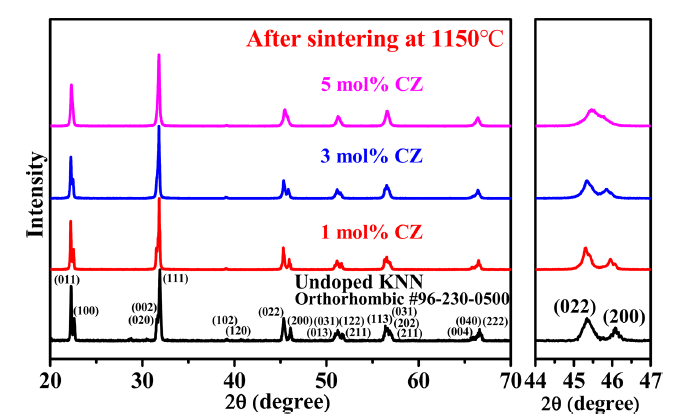
- 392 View
- 3 Download
-
 Abstract
Abstract
 PDF
PDF The grain growth behavior in the (1-x)K0.5Na0.5NbO3-
x CaZrO3 (KNNCZ-x) system is studied as a function of the amount of CZ and grain shape. The (1-x)K0.5Na0.5NbO3-x CaZrO3 (KNNCZ-x) powders are synthesized using a conventional solid-state reaction method. A single orthorhombic phase is observed atx = 0 – 0.03. However, rhombohedral and orthorhombic phases are observed atx = 0.05. The grain growth behavior changes from abnormal grain growth to the suppression of grain growth as the amount of CaZrO3 (CZ) increases. With increasing CZ content, grains become more faceted, and the step-free energy increases. Therefore, the critical growth driving force increases. The grain size distribution broadens with increasing sintering time in KNNCZ-0.05. As a result, some large grains with a driving force larger than the critical driving force for growth exhibit abnormal grain growth behavior during sintering. Therefore, CZ changes the grain growth behavior and microstructure of KNN. Grain growth at the faceted interface of the KNNCZ system occurs via two-dimensional nucleation and growth.
- [Korean]
- Fabrication of Porous Tungsten by Freeze Casting and Vacuum Drying of WO3/Tert-butyl Alcohol Slurry
- Youn Ji Heo, Eui Seon Lee, Sung-Tag Oh, Young-Keun Jeong
- J Powder Mater. 2022;29(2):118-122. Published online April 1, 2022
- DOI: https://doi.org/10.4150/KPMI.2022.29.2.118
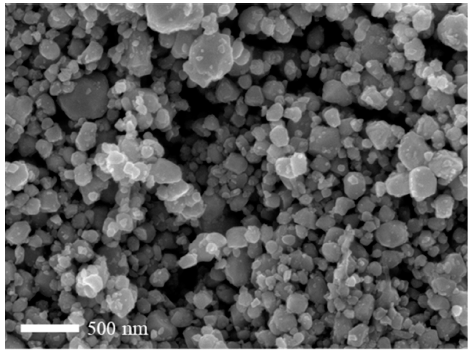
- 737 View
- 7 Download
- 2 Citations
-
 Abstract
Abstract
 PDF
PDF The synthesis of porous W by freeze-casting and vacuum drying is investigated. Ball-milled WO3 powders and tert-butyl alcohol were used as the starting materials. The tert-butyl alcohol slurry is frozen at –25°C and dried under vacuum at –25 and –10°C. The dried bodies are hydrogen-reduced at 800°C and sintered at 1000°C. The XRD analysis shows that WO3 is completely reduced to W without any reaction phases. SEM observations reveal that the struts and pores aligned in the tert-butyl alcohol growth direction, and the change in the powder content and drying temperature affects the pore structure. Furthermore, the struts of the porous body fabricated under vacuum are thinner than those fabricated under atmospheric pressure. This behavior is explained by the growth mechanism of tert-butyl alcohol and rearrangement of the powders during solidification. These results suggest that the pore structure of a porous body can be controlled by the powder content, drying temperature, and pressure.
-
Citations
Citations to this article as recorded by-
Fabrication of porous W by freeze-casting and hydrogen reduction of camphene-based WO
3
suspension
Ji Won Choi, Youngmin Kim, Ji Young Kim, Eui Seon Lee, Sung-Tag Oh
Powder Metallurgy.2025; 68(3): 283. CrossRef - Fabrication of Porous TiO2 with Aligned Pores Using Tert-Butyl Alcohol Based Freeze Casting
Eui Seon Lee, Sung-Tag Oh
Korean Journal of Metals and Materials.2024; 62(12): 929. CrossRef
-
Fabrication of porous W by freeze-casting and hydrogen reduction of camphene-based WO
3
suspension
- [Korean]
- A Study on the Roll Manufacturing Technology Applying Powder Flame Spray Coating Technology of Ni-Based Alloy Powder
- Ji Woong Park, Soon Kook Kim, Gye Bum Ban
- J Powder Mater. 2022;29(2):123-131. Published online April 1, 2022
- DOI: https://doi.org/10.4150/KPMI.2022.29.2.123

- 892 View
- 8 Download
- 1 Citations
-
 Abstract
Abstract
 PDF
PDF The purpose of this study is to improve the mechanical properties and develop manufacturing technology through self-soluble alloy powder flame spray coating on the surface of a run-out table roller for hot rolling. The roller surface of the run-out table should maintain high hardness at high temperatures and possess high wear, corrosion, and heat resistances. In addition, sufficient bonding strength between the thermal spray coating layer and base material, which would prevent the peel-off of the coating layer, is also an important factor. In this study, the most suitable powder and process for roll manufacturing technology are determined through the initial selection of commercial alloy powder for roll manufacturing, hardness, component analysis, and bond strength analysis of the powder and thermal spray coating layer according to the powder.
-
Citations
Citations to this article as recorded by- Influence of rare earth oxides on microstructure and mechanical properties of nickel-based superalloys fabricated by high energy beam processing: A review
Lianjie Bi, Hua Yan, Peilei Zhang, Haichuan Shi, Zhiyuan Li, Ruidi Li
Journal of Rare Earths.2024; 42(9): 1629. CrossRef
- Influence of rare earth oxides on microstructure and mechanical properties of nickel-based superalloys fabricated by high energy beam processing: A review
- [Korean]
- Microstructure and Mechanical Properties of CoCrFeMnNi-type High-entropy Alloy Fabricated by Selective Laser Melting: A Review
- Jeong Min Park
- J Powder Mater. 2022;29(2):132-151. Published online April 1, 2022
- DOI: https://doi.org/10.4150/KPMI.2022.29.2.132
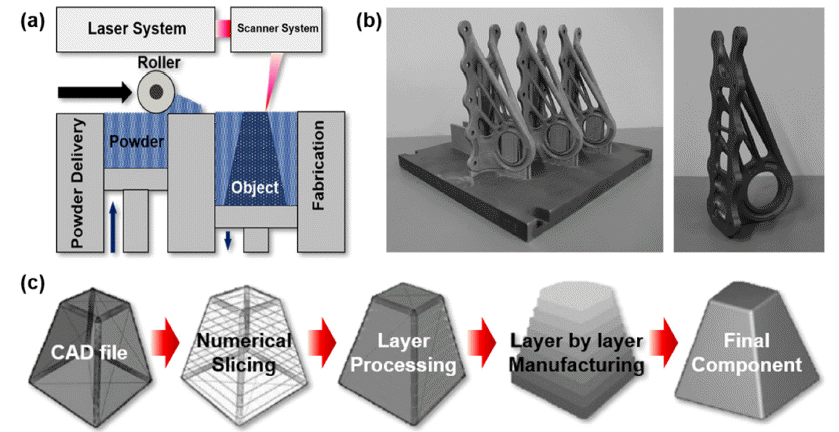
- 2,282 View
- 33 Download
- 7 Citations
-
 Abstract
Abstract
 PDF
PDF The CoCrFeMnNi high-entropy alloy (HEA), which is the most widely known HEA with a single facecentered cubic structure, has attracted significant academic attention over the past decade owing to its outstanding multifunctional performance. Recent studies have suggested that CoCrFeMnNi-type HEAs exhibit excellent printability for selective laser melting (SLM) under a wide range of process conditions. Moreover, it has been suggested that SLM can not only provide great topological freedom of design but also exhibit excellent mechanical properties by overcoming the strength–ductility trade-off via producing a hierarchical heterogeneous microstructure. In this regard, the SLM-processed CoCrFeMnNi HEA has been extensively studied to comprehensively understand the mechanisms of microstructural evolution and resulting changes in mechanical properties. In this review, recent studies on CoCrFeMnNi-type HEAs produced using SLM are discussed with respect to process-induced microstructural evolution and the relationship between hierarchical heterogeneous microstructure and mechanical properties.
-
Citations
Citations to this article as recorded by- Thermodynamic and Electronic Descriptor-Driven Machine Learning for Phase Prediction in High-Entropy Alloys: Experimental Validation
Nguyen Lam Khoa, Nguyen Duy Khanh, Hoang Thi Ngoc Quyen, Nguyen Thi Hoang, Oanh, Le Hong Thang, Nguyen Hoa Khiem, Nguyen Hoang Viet
Journal of Powder Materials.2025; 32(3): 191. CrossRef - Investigation of effects of process parameters on microstructure and fracture toughness of SLM CoCrFeMnNi
Joseph Agyapong, Diego Mateos, Aleksander Czekanski, Solomon Boakye-Yiadom
Journal of Alloys and Compounds.2024; 987: 173998. CrossRef - Cryogenic Tensile Behavior of Ferrous Medium-entropy Alloy Additively Manufactured by Laser Powder Bed Fusion
Seungyeon Lee, Kyung Tae Kim, Ji-Hun Yu, Hyoung Seop Kim, Jae Wung Bae, Jeong Min Park
journal of Korean Powder Metallurgy Institute.2024; 31(1): 8. CrossRef - Data-driven Approach to Explore the Contribution of Process Parameters for Laser Powder Bed Fusion of a Ti-6Al-4V Alloy
Jeong Min Park, Jaimyun Jung, Seungyeon Lee, Haeum Park, Yeon Woo Kim, Ji-Hun Yu
journal of Korean Powder Metallurgy Institute.2024; 31(2): 137. CrossRef - Cryogenic tensile behavior of carbon-doped CoCrFeMnNi high-entropy alloys additively manufactured by laser powder bed fusion
Haeum Park, Hyeonseok Kwon, Kyung Tae Kim, Ji-Hun Yu, Jungho Choe, Hyokyung Sung, Hyoung Seop Kim, Jung Gi Kim, Jeong Min Park
Additive Manufacturing.2024; 86: 104223. CrossRef - Microstructural evolution and high strain rate deformation response of SLM-printed CoCrFeMnNi after annealing and deep-cryogenic treatment
Joseph Agyapong, Aleksander Czekanski, Solomon Boakye Yiadom
Materials Characterization.2024; 218: 114506. CrossRef - High-speed manufacturing-driven strength-ductility improvement of H13 tool steel fabricated by selective laser melting
Yeon Woo Kim, Haeum Park, Young Seong Eom, Dong Gill Ahn, Kyung Tae Kim, Ji-hun Yu, Yoon Suk Choi, Jeong Min Park
Powder Metallurgy.2023; 66(5): 582. CrossRef
- Thermodynamic and Electronic Descriptor-Driven Machine Learning for Phase Prediction in High-Entropy Alloys: Experimental Validation
- [Korean]
- Recent Studies on Performance Enhancement of Polycrystal SnSe Thermoelectric Materials
- Myeong Jun Jung, Byung Joon Choi
- J Powder Mater. 2022;29(2):152-158. Published online April 1, 2022
- DOI: https://doi.org/10.4150/KPMI.2022.29.2.152
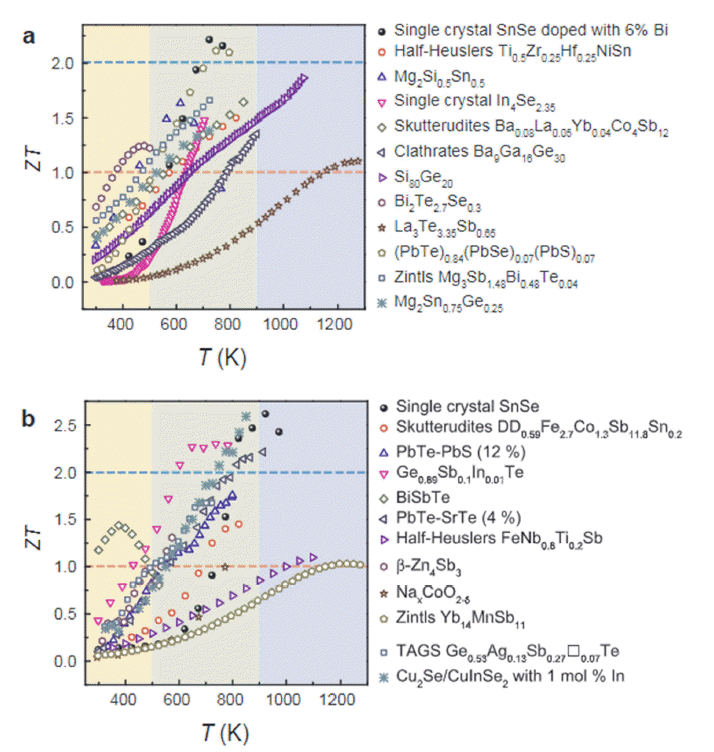
- 913 View
- 5 Download
- 1 Citations
-
 Abstract
Abstract
 PDF
PDF Thermoelectric materials can reversely convert heat and electricity into each other; therefore, they can be very useful for energy harvesting from heat waste. Among many thermoelectrical materials, SnSe exhibits outstanding thermoelectric performance along the particular direction of a single crystal. However, single-crystal SnSe has poor mechanical properties and thus it is difficult to apply for mass production. Therefore, polycrystalline SnSe materials may be used to replace single-crystal SnSe by overcoming its inferior thermoelectric performance owing to surface oxidation. Considerable efforts are currently focused on enhancing the thermoelectric performance of polycrystalline SnSe. In this study, we briefly review various enhancement methods for SnSe thermoelectric materials, including doping, texturing, and nano-structuring. Finally, we discuss the future prospects of SnSe thermoelectric powder materials.
-
Citations
Citations to this article as recorded by- The Mechanism Behind the High zT of SnSe2 Added SnSe at High Temperatures
JunSu Kim, Seong-Mee Hwang, Hyunjin Park, Yinglu Tang, Won-Seon Seo, Chae Woo Ryu, Heesun Yang, Weon Ho Shin, Hyun-Sik Kim
Korean Journal of Metals and Materials.2023; 61(11): 857. CrossRef
- The Mechanism Behind the High zT of SnSe2 Added SnSe at High Temperatures
- [Korean]
- Standardization Status of Rare Earth Elements Recycling in ISO TC 298
- Mi Hye Lee, Yosep Song, Ji Sun On, Seung Hwan Yoon, Munhwan Han, Bum Sung Kim, Taek-soo Kim, Bin Lee
- J Powder Mater. 2022;29(2):159-165. Published online April 1, 2022
- DOI: https://doi.org/10.4150/KPMI.2022.29.2.159

- 1,345 View
- 26 Download
-
 Abstract
Abstract
 PDF
PDF Rare earth elements, which are important components of motors, are in high demand and thus constantly get more expensive. This tendency is driven by the growth of the electric vehicle market, as well as environmental issues associated with rare-earth metal manufacturing. TC 298 of the ISO manages standardization in the areas of rare-earth recycling, measurement, and sustainability. Korea, a resource-poor country, is working on international standardization projects that focus on recycling and encouraging the domestic adoption of international standards. ITU-T has previously issued recommendations regarding the recycling of rare-earth metals from e-waste. ISO TC 298 expands on the previous recommendations and standards for promoting the recycling industry. Recycling-related rare earth standards and drafts covered by ISO TC 298, as well as Korea’s strategies, are reviewed and discussed in this article.
- [Korean]
- Investigation of Factors for Smartization of
Ppuri Enterprises Based on the Smart Factory Status - Bo Kyung Kim, Sang Mok Lee, Tae Bum Kim, Taek Soo Kim, Chang Kyung Kim
- J Powder Mater. 2022;29(2):166-175. Published online April 1, 2022
- DOI: https://doi.org/10.4150/KPMI.2022.29.2.166
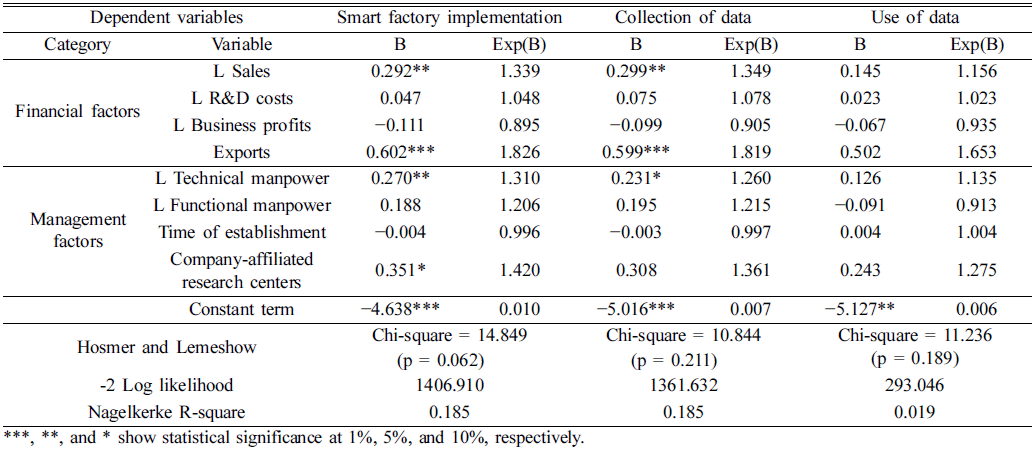
- 989 View
- 11 Download
-
 Abstract
Abstract
 PDF
PDF Ppuri or Root technology primarily includes technologies such as casting, mold, plastic working, welding, heat treatment and surface treatment. It is regarded as an essential element for improving the competitiveness of the quality of final products. This study investigates the current status of smart factory implementation for Ppuri companies and analyzes the influencing relationships among various company factors. The factors affecting smart factory implementation for Ppuri companies are sales, exports, number of technical employees, and holding corporate research institutes. In addition, this research shows that even if smart factory implementation is pursued for data collection, data utilization is not implemented properly. Thus, it is suggested that the implementation of smart factories requires not only the availability of facilities and systems but also proper data utilization.
TOP
 KPMI
KPMI




 First
First Prev
Prev


